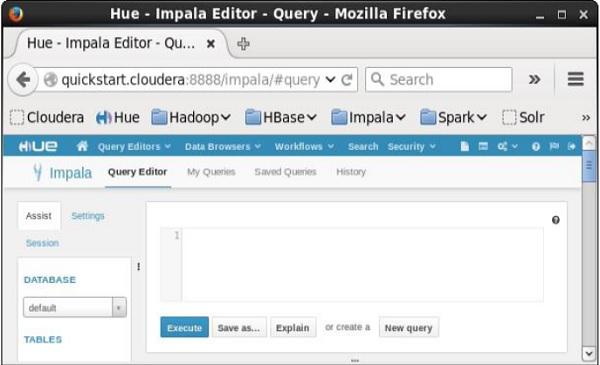Impala - Environment
This chapter explains the prerequisites for installing Impala, how to download, install and set up Impala in your system.
Similar to Hadoop and its ecosystem software, we need to install Impala on Linux operating system. Since cloudera shipped Impala, it is available with Cloudera Quick Start VM.
This chapter describes how to download Cloudera Quick Start VM and start Impala.
Downloading Cloudera Quick Start VM
Follow the steps given below to download the latest version of Cloudera QuickStartVM.
Step 1
Open the homepage of cloudera website http://www.cloudera.com/. You will get the page as shown below.
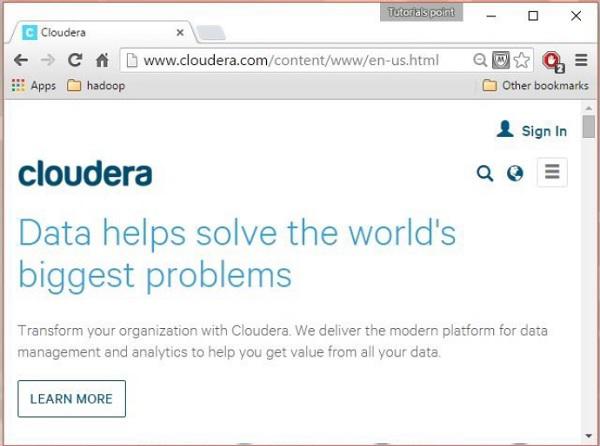
Step 2
Click the Sign in link on the cloudera homepage, which will redirect you to the Sign in page as shown below.

If you haven’t registered yet, click the Register Now link which will give you Account Registration form. Register there and sign in to cloudera account.
Step 3
After signing in, open the download page of cloudera website by clicking on the Downloads link highlighted in the following snapshot.
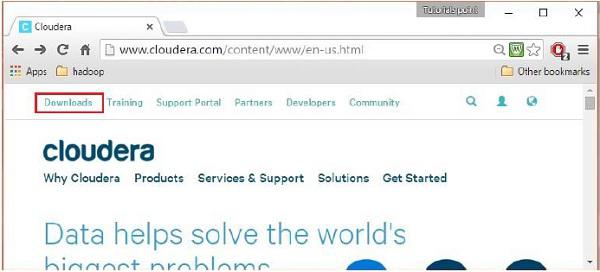
Step 4 - Download QuickStartVM
Download the cloudera QuickStartVM by clicking on the Download Now button, as highlighted in the following snapshot

This will redirect you to the download page of QuickStart VM.
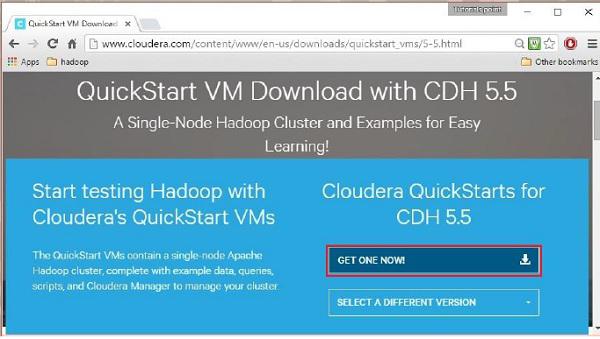
Click the Get ONE NOW button, accept the license agreement, and click the submit button as shown below.

Cloudera provides its VM compatible VMware, KVM and VIRTUALBOX. Select the required version. Here in our tutorial, we are demonstrating the Cloudera QuickStartVM setup using virtual box, therefore click the VIRTUALBOX DOWNLOAD button, as shown in the snapshot given below.
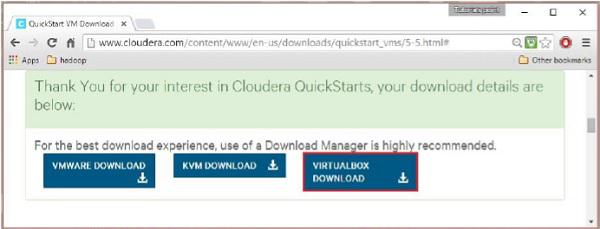
This will start downloading a file named cloudera-quickstart-vm-5.5.0-0-virtualbox.ovf which is a virtual box image file.
Importing the Cloudera QuickStartVM
After downloading the cloudera-quickstart-vm-5.5.0-0-virtualbox.ovf file, we need to import it using virtual box. For that, first of all, you need to install virtual box in your system. Follow the steps given below to import the downloaded image file.
Step 1
Download virtual box from the following link and install it https://www.virtualbox.org/
Step 2
Open the virtual box software. Click File and choose Import Appliance, as shown below.

Step 3
On clicking Import Appliance, you will get the Import Virtual Appliance window. Select the location of the downloaded image file as shown below.
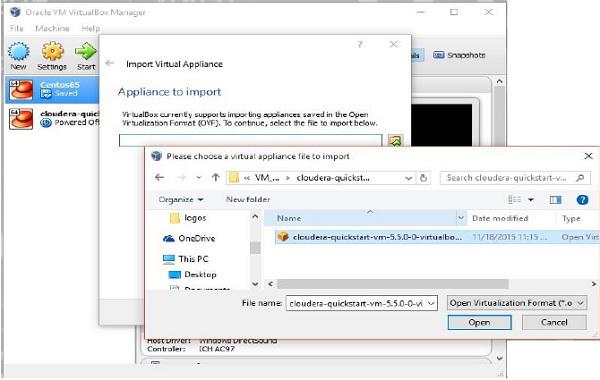
After importing Cloudera QuickStartVM image, start the virtual machine. This virtual machine has Hadoop, cloudera Impala, and all the required software installed. The snapshot of the VM is shown below.
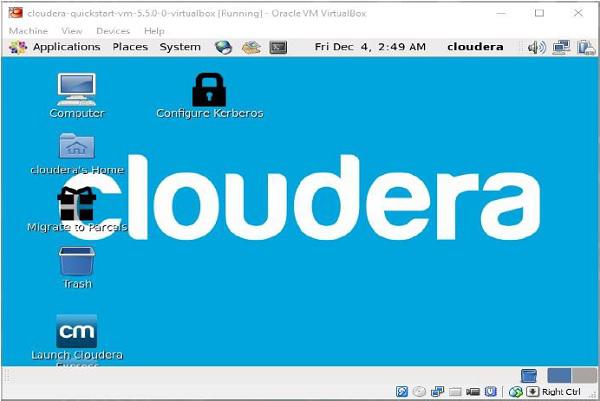
Starting Impala Shell
To start Impala, open the terminal and execute the following command.
[cloudera@quickstart ~] $ impala-shell
This will start the Impala Shell, displaying the following message.
Starting Impala Shell without Kerberos authentication
Connected to quickstart.cloudera:21000
Server version: impalad version 2.3.0-cdh5.5.0 RELEASE (build
0c891d79aa38f297d244855a32f1e17280e2129b)
********************************************************************************
Welcome to the Impala shell. Copyright (c) 2015 Cloudera, Inc. All rights reserved.
(Impala Shell v2.3.0-cdh5.5.0 (0c891d7) built on Mon Nov 9 12:18:12 PST 2015)
Press TAB twice to see a list of available commands.
********************************************************************************
[quickstart.cloudera:21000] >
Note − We will discuss all the impala-shell commands in later chapters.
Impala Query editor
In addition to Impala shell, you can communicate with Impala using the Hue browser. After installing CDH5 and starting Impala, if you open your browser, you will get the cloudera homepage as shown below.
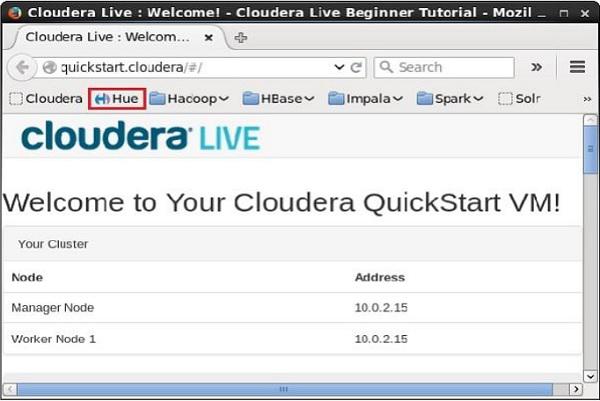
Now, click the bookmark Hue to open the Hue browser. On clicking, you can see the login page of the Hue Browser, logging with the credentials cloudera and cloudera.
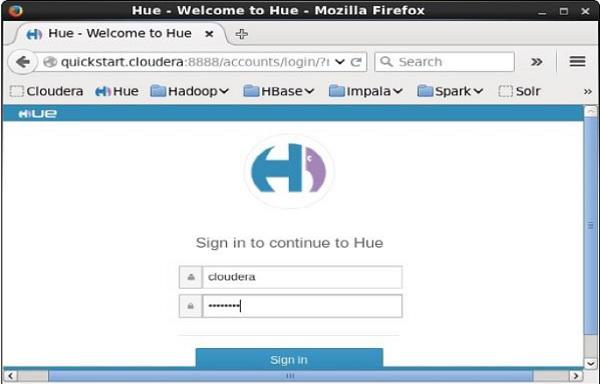
As soon as you log on to the Hue browser, you can see the Quick Start Wizard of Hue browser as shown below.

On clicking the Query Editors drop-down menu, you will get the list of editors Impala supports as shown in the following screenshot.
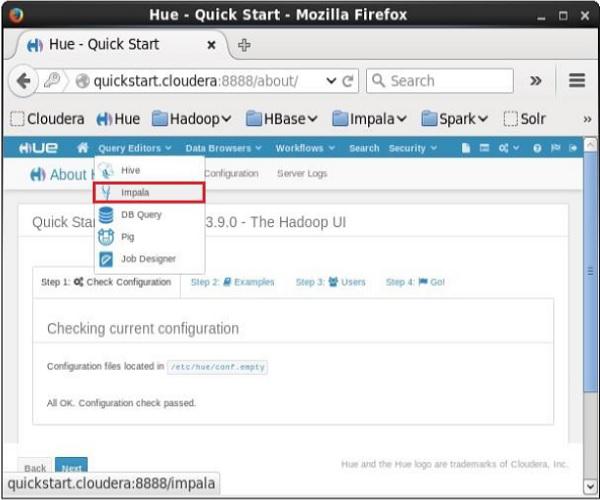
On clicking Impala in the drop-down menu, you will get the Impala query editor as shown below.
